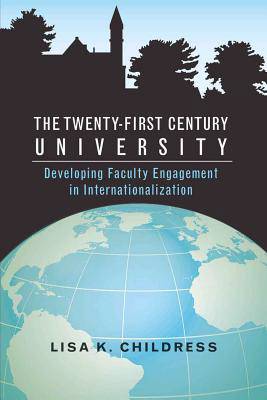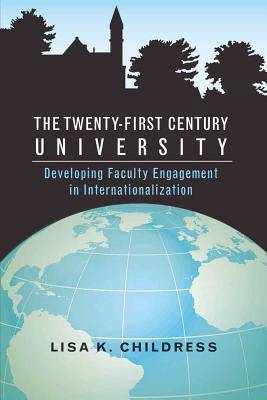
- Afhalen na 1 uur in een winkel met voorraad
- Gratis thuislevering in België vanaf € 30
- Ruim aanbod met 7 miljoen producten
- Afhalen na 1 uur in een winkel met voorraad
- Gratis thuislevering in België vanaf € 30
- Ruim aanbod met 7 miljoen producten
Zoeken
The Twenty-First Century University
Developing Faculty Engagement in Internationalization
Lisa K Childress
€ 49,95
+ 99 punten
Uitvoering
Omschrijving
During the last few decades, many university presidents and provosts have expressed an intent to internationalize their institutions to equip students with the broad intellectual skills necessary to succeed in the global twenty-first century. But as various academic and professional studies have shown, these well-intentioned calls for internationalization have remained little more than rhetoric. Obstacles embedded in developing faculty engagement in internationalization are largely responsible for this inability to turn rhetoric into reality.
This groundbreaking book identifies what successful institutions have done to overcome endogenous challenges and successfully engage faculty in the internationalization process. Examining two exemplary cases of internationalization, this book extrapolates strategies for colleges and universities to adapt to their unique institutional cultures, histories, and priorities, to support faculty in internationalizing their teaching, research, and service.
In addition to in-depth analysis of each successful institution, the book analyzes cross-case findings and implications. This book presents a new conceptual model and typology of faculty engagement in internationalization that can be used both by university administrators to expand faculty involvement in the implementation of their institution's internationalization plans and by faculty to advance their knowledge of internationalization.
This groundbreaking book identifies what successful institutions have done to overcome endogenous challenges and successfully engage faculty in the internationalization process. Examining two exemplary cases of internationalization, this book extrapolates strategies for colleges and universities to adapt to their unique institutional cultures, histories, and priorities, to support faculty in internationalizing their teaching, research, and service.
In addition to in-depth analysis of each successful institution, the book analyzes cross-case findings and implications. This book presents a new conceptual model and typology of faculty engagement in internationalization that can be used both by university administrators to expand faculty involvement in the implementation of their institution's internationalization plans and by faculty to advance their knowledge of internationalization.
Specificaties
Betrokkenen
- Auteur(s):
- Uitgeverij:
Inhoud
- Aantal bladzijden:
- 174
- Taal:
- Engels
- Reeks:
- Reeksnummer:
- nr. 48
Eigenschappen
- Productcode (EAN):
- 9781433106590
- Verschijningsdatum:
- 4/12/2009
- Uitvoering:
- Paperback
- Formaat:
- Trade paperback (VS)
- Afmetingen:
- 150 mm x 224 mm
- Gewicht:
- 272 g

Alleen bij Standaard Boekhandel
+ 99 punten op je klantenkaart van Standaard Boekhandel
Beoordelingen
We publiceren alleen reviews die voldoen aan de voorwaarden voor reviews. Bekijk onze voorwaarden voor reviews.








